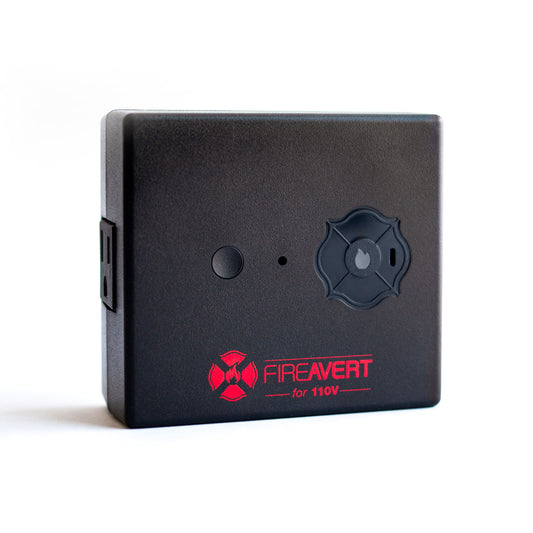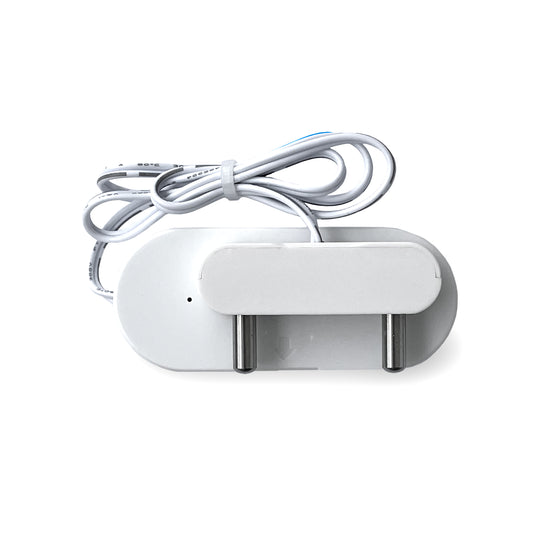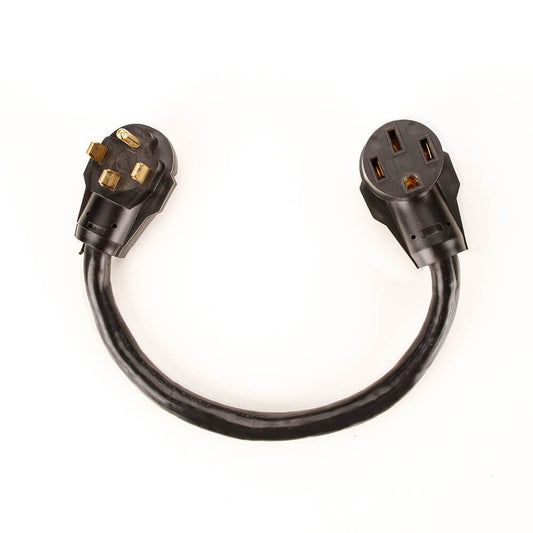Fire vs. Smoke Damage: 2025 Complete Guide

When an apartment or house fire breaks out, the damage it causes can be devastating. The US Fire Administration (USFA) estimates over $11.2 billion in damages in 2023.
Not only are flames capable of destroying physical structures and belongings, but smoke and soot left in its wake can leave lasting marks as well.
Compare the costs associated with fire and smoke damage
Compare Damage Types
Fire vs. Smoke Damage: Comparison
While both fire and smoke damage can be severe, there are key differences that are important for restoration and safety. Let's look at both to understand how to prevent property damage.
Fire Damage
The destruction from a house fire is obvious, burned belongings and buildings. This is probably the type of damage you would expect from a fire.
Flame damage is dangerous because fires spread fast if they aren't discovered quickly. In fact, a fire can double in size every 30 seconds. This means that if one room ignites, the whole house could be on fire within 2-3 minutes.
Smoke Damage
Smoke is the less obvious type of damage. That is why it is often called The invisible destroyer. The question is 'how does smoke damage a home?'
Smoke isn't just an illusion, it is small particles of whatever is burning. These small particles can embed into many different materials, leading to corrosion or persistent odors and stains.
The problem with smoke damage is that even small fires can have big consequences. If the smoke gets into the HVAC system it can easily spread and damage an entire building.
The True Cost: Fire and Smoke Damage
Angi (formerly Angie's list) ran an analysis of all fire and smoke repair costs. Their national average cost for a home fire is $27,175.
The USFA national estimates for total property loss from fire damage is $32,693.
A fire in your home could cost you an average of $27,000 to $32,000. Let's look into the details of these costs by type of damage:
Structural Damage
The most apparent consequence of a fire is damage to the structure. When the buildings frame is burned the structure becomes risky and will require significant repairs. Structural damage can often totally destroy a home leading to a complete rebuild.
Structural repairs can cost $5,000 to $15,000 on average. If a complete rebuild is required it will cost around $100-$150 per square foot. This can mean total costs upwards of $500,000+ depending on the size of your home.
Water Damage
An oft forgotten aspect of fire damage is the water damage from putting out the flames. Depending on how much water is required to extinguish the flames your total will change. Early detection water damage costs around $1,000 and later detection costs about $10,000.
Soot Removal
When your home is on fire, the byproducts of the blaze turn into soot or ash. Removing completely burned material can cost between $2,000-$6,000. As with every form of fire damage, early detection and prevention can save you thousands.

Smoke Damage
Small fires may only cost you about $200 in simple smoke restoration. But fires that smoke a lot or spread quickly can cost around $7,000 in just smoke repair and odor removal.
In fact, burning human-made fibres can produce fumes that are toxic. Things as simple as hairs or even lint can burn into toxic fumes that can be harmful.
You may have to throw away and replace small items such as clothes, or furniture that continues to stink.
Cost Comparison Table
| Damage Type | Average Cost Range | Key Notes |
|---|---|---|
| Structural Damage | $5,000 - $500,000+ | Full rebuilds cost $100-$150/sq ft |
| Water Damage | $1,000 - $10,000 | Costs rise with delayed detection |
| Soot Removal | $2,000 - $6,000 | Complete burns require extensive cleaning |
| Smoke Damage | $200 - $7,000 | Odor removal complexity varies |
| Total Average Cost | $27,000 - $32,000 | Small fires can exceed $50K with hidden damage |
What Causes Smoke & Fire Damage?
To understand what is causing the damage from home fires we have to understand how fires start. The top 4 causes of home fires in the United States are
- Cooking - 167,800 | 48.7%
- Unintentional/Careless - 31,500 | 9.1%
- Heating - 27,900 | 8.1%
- Electrical Malfunction - 23,700 | 6.8%
Cooking fires often smoke for a long time before flames are ever present. Watch this video to see this in action.
These types of fires can cause significant smoke damage to walls and ceilings. They also tend to damage appliances and cupboards near the stove/oven.
Unintentional/Careless fires have been the most costly type of fire since 2016. They cost an average of $78,746 over 41% more costly than the average home fire.
These fires are started on accident, which often means they aren't detected quickly. This leads to a complete burn leading to incredibly high costs. They often ignite carpet or upholstery which burn and spread flames quickly.
Heating fires definitely aren't the most costly or common. The nature of these fires is that heating equipment produces heat which can lead to a consistent burn and lots of smoke.
Although the least common type of fire we discussed today, electrical malfunction fires led to the second most dollar loss. With a loss of $1.5 billion dollars they made up 13% of the total home fire damage costs.
How to Prevent Fire Damage
Most home fires start in the kitchen, so prevention should also start there.
Prevent Kitchen Fires
To completely prevent all damage from a cooking fire, consider installing a smoke alarm monitoring system like a shutoff device. FireAvert's Auto Stove Shutoff can completely prevent fire and smoke damage from cooking mishaps.
For that to work, you must have smoke detectors installed. Smoke detectors can help detect fires quickly and prevent fire and smoke damage.

Quickly Extinguish Fires
To extinguish fires before they grow into damaging infernos follow these simple instructions
For [Type of fire]... Use [Method]
Grease Fire - Fire Extinguisher, put a lid or smothering blanket, smother with baking soda NEVER USE WATER
Electrical Fire - Turn off power, use fire extinguisher NEVER USE WATER
Gasoline or other flammable liquid - Fire Extinguisher only NEVER USE WATER
Wood/Paper/Trash/Ordinary Material - Water or a fire extinguisher will work
Keep fire extinguishers in your home to prevent fire damage.
Family Fire Safety
Teach your children about basic fire safety and keep flammable liquids out of reach from them. Doing this can prevent unintentional fires and will keep your family safer.
If you have elderly parents, consider FireAvert products to prevent forgotten cooking fires. Our FireAvert PRO system can send text alerts to you if a shutoff event occurs, helping you keep track of your family.
Recovery + Insurance Tips
Recovering after a home fire can be expensive as well as physically or emotionally challenging.
If you or anyone in your family is experiencing these symptoms, you should visit a health professional to get treatment.
- Respiratory Issues
- Eye Irritation
- Skin issues - dryness, itchiness, or rashes
Another health concern to consider is Carbon Monoxide poisoning. If you are feeling dizzy, weak or confused after inhaling smoke, get medical help.
Don't underestimate the emotional impact of a home fire. Seek professional counseling or therapy if you think it would help you or traumatic feelings persist.
Insurance Tactics
1. Document everything - take pictures of everything damaged, including serial numbers where possible to get the most from your provider. Take a video walkthrough of your entire home to show the complete picture.
2. Hidden Coverage Areas - Your policy may include things such as debris removal separate from repair efforts. If your policy can get you money for your living situation during restoration, keep the receipts related to lodging and food.
3. Contact An Adjuster - Leverage both your insurance agent and the adjuster against each other to get the best payout possible.
Download our free Fire Damage Recovery Kit and follow along. This includes an insurance claim checklist, steps to get the best contractor, and a smoke odor removal guide.
Protect What Matters Most
While fire and smoke damage can be devastating, early prevention beats costly repairs. Now that you understand the risks and causes of fire damage, take action:
- Prevent with FireAvert's automatic shutoff
- Prepare by downloading our recovery resource
- Sleep Easier knowing you're protected
Your Fire Safety Starter Kit
Get our free 2024 Fire Prevention Guide + insurance claim checklist:
Download Now →




